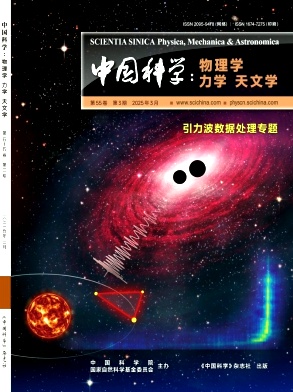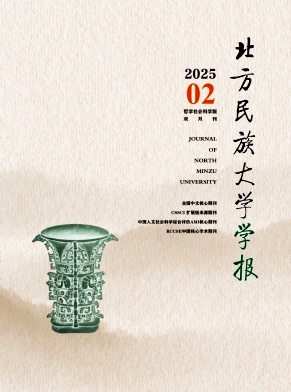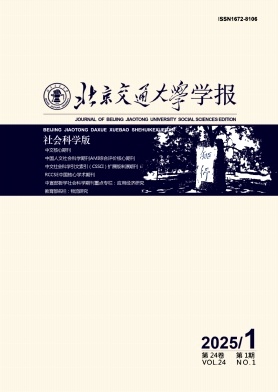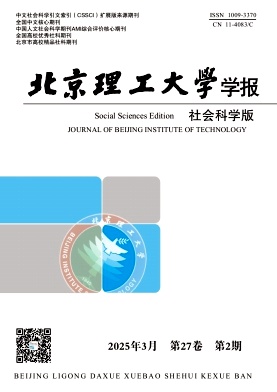中國科學(xué):物理學(xué) 力學(xué) 天文學(xué)介紹
Aims and scope
SCIENCE CHINA Physics, Mechanics & Astronomy (Sci. China- Phys. Mech. Astron.) is a monthly peer-reviewed academic journal supervised by the Chinese Academy of Sciences, and cosponsored by the Chinese Academy of Sciences and the National Natural Science Foundation of China. Its primary mission is to encourage communication of basic and innovative research results of high quality and broad interest in the fields of physics, mechanics and astronomy.
The subject areas featured include but not limited to condensed matter physics, optical physics, quantum physics, particle accelerator, high-energy physics, nuclear physics, solid mechanics, fluid mechanics, astrophysics, and interdisciplinary areas, etc.
Contributions are invited from researchers all over the world.
Article types
Papers published in Sci. China-Phys. Mech. Astron. include:
Editor’s Focus Papers present highly original and innovative material together with the Editor-in-Chief’s and experts’ comments on their significance and novelty.
Review articles summarize representative results and achievements in a particular topic or an area, comment on the current situation, and advise on the research directions. They should focus on one topical aspect rather than providing a comprehensive literature survey. Review paper should closely relate to, but not only focus on the author’s own research work. Reviews are suggested to be limited to 20000 words.
Articles report on important original results in all areas of physics, mechanics and astronomy. Other supporting information should usually be included in supplementary materials that will only be published online. Articles are suggested to be limited to 8000 words, including a 300-word abstract and 4-6 keywords.
Progress articles introduce and comment on the substantial advancement and its importance in the fast-developing fields. Progress articles are expected to be within 5000 words and less than 60 references.
Short Communications present short reports in a timely manner of the latest important results. Short Communications are expected to be less than 1000 words with 1 displayed item and less than 10 references. Abstract and keywords are not needed. Any other supporting information (if necessary) should be submitted as supplementary materials.
News & Views cover original viewpoints about major scientific discoveries, research policies and other scientific events. News & Views are generally solicited and are expected to have no more than 1000 words with 1 displayed item and a maximum 10 references.
Research Highlights are succinct summaries and comments on a recent research achievement published in Sci. China-Phys. Mech. Astron. and other journals. Highlights should be limited to 500 words with 1 displayed item and less than 5 references.
Letters to the Editor report novel findings that have an immediate major impact on the related sciences research, or comment on a recent publication in Sci. China-Phys. Mech. Astron. within the previous three months. Letters to the Editor are generally within 500 words with less than 5 references.
Reviewing policy
All submissions will be reviewed by referees selected by the editorial board. The decision of acceptance or rejection of a manuscript is made by the editorial board based on the referees’ reports. The entire review process may take 30 to 60 days, and the editorial office will inform the author of the decision as soon as the process is completed. If the editorial board fails to make a decision within 60 days, it is up to the authors to decide whether they would withdraw their paper or submit it elsewhere.
This journal also publishes special/guest-edited issues. The peer review process for these articles is the same as the peer review process of the journal in general. Additionally, if the guest editor(s) authors an article in their special issue, they will not handle the peer review process.
Open Access policy
Open Choice allows you to publish open access in this journal, making your research more visible and accessible immediately on publication. Article processing charges (APCs) vary by journal – view the full list
Copyright and license term-CC BY
Open Choice articles do not require transfer of copyright as the copyright remains with the author. In opting for open access, the author(s) agree to publish the article under the Creative Commons Attribution License. When you choose Open Choice, the Editorial Office will provide you the DOI of the article as well as the OA License Agreement to sign.
The author should fill in the Manual Open Choice Order form (www.springer.com/manualopenchoiceorder) and remit payment/send cheques according to the invoice the author will receive later.
Publication Charge
Article processing charges are 800 RMB for each page in black and white and 800-1000 RMB for each color page. An invoice for the charge will be sent to the corresponding author by the Editorial Office. Authors will be presented one sample copy. If more sample copies (240 RMB) and paper offprints (30 RMB, at least 10 copies of printed) are needed, please inform the managing editor before printing and indicate clearly the types and numbers.
Copyright
A completed form assigning copyright to Science China Press must be returned to the Sci. China-Phys. Mech. Astron. office when the paper is accepted for publication. The copyright covers the exclusive right to reproduce and distribute the article (in various languages), including offprints and reprints, translations, photographic reproductions, microform, electronic form (offline, online) or other reproductions of similar nature.
Language
Manuscripts that are accepted for publication will be checked by our copyeditors for spelling and formal style. This may not be sufficient if English is not your native language and substantial editing would be required. In that case, you may want to ask a native speaker to help you or arrange for your manuscript to be checked by a professional language editor prior to submission. A clear and concise language will help editors and reviewers concentrate on the scientific content of your paper and thus smooth the peer review process. Use of an editing service is neither a requirement nor a guarantee of acceptance for publication.
中國科學(xué):物理學(xué) 力學(xué) 天文學(xué)投稿要求
Ensure that the following items are present
The following list will be useful during the final checking of an article prior to sending it to the journal for review. Please consult this Guide for Authors for further details of any item.
Ensure that the following items are present:
One author has been designated as the corresponding author with contact details:
• E-mail address
• Full postal address
All necessary files have been uploaded, and contain:
• Keywords
• All figure captions
• All tables (including title, description, footnotes)
Further considerations
• Manuscript has been "spell-checked"and "grammar-checked"
• References are in the correct format for this journal
• All references mentioned in the Reference list are cited in the text, and vice versa
• Permission has been obtained for use of copyrighted material from other sources (including the Internet)
Printed version of figures (if applicable) in color or black-and-white
• Indicate clearly whether or not color or black-and-white in print is required.
Ethical responsibilities
This journal is committed to upholding the integrity of the scientific record. As a member of the Committee on Publication Ethics (COPE) the journal will follow the COPE guidelines on how to deal with potential acts of misconduct.
Authors should refrain from misrepresenting research results which could damage the trust in the journal and ultimately the entire scientific endeavour. Maintaining integrity of the research and its presentation can be achieved by following the rules of good scientific practice, which includes:
The manuscript has not been submitted to more than one journal for simultaneous consideration.
The manuscript has not been published previously(partly or in full), unless the new work concerns an expansion of previous work(please provide transparency on the re-use of material to avoid the hint of text-recycling (“self-plagiarism”)).
A single study is not split up into several parts to increase the quantity of submissions and submitted to various journals or to one journal over time (e.g. “salami-publishing”).
No data have been fabricated or manipulated(including images) to support your conclusions.
No data, text, or theories by others are presented as if they were the authors own (“plagiarism”). Proper acknowledgements to other works must be given (this includes material that is closely copied (near verbatim), summarized and/or paraphrased),quotation marks are used for verbatim copying of material, and permissions are secured for material that is copyrighted.
Important note: the journal may use software to screen for plagiarism.
Consent to submit has been received from all co-authors and responsible authorities at the institute/organization where the work has been carried out before the work is submitted.
Authors whose names appear on the submission have contributed sufficiently to the scientific work and therefore share collective responsibility and accountability for the results.
Informed consent
All individuals have individual rights that are not to be infringed. Individual participants in studies have the right to decide what happens to the (identifiable) personal data gathered and to what they have said e.g. during a study or an interview as well as to any photograph that was taken. Hence it is important that all participants gave their informed consent in writing prior to inclusion in the study. Identifying details (names, dates of birth, identity numbers and other information) of the participants that were studied should not be published in written descriptions, photographs, and genetic profiles unless the information is essential for scientific purposes and the participant (or parent or guardian if the participant is incapable) has given written informed consent for publication. Complete anonymity is difficult to achieve in some cases, and informed consent should be obtained if there is any doubt. For example, masking the eye region in photographs of participants is inadequate protection of anonymity. If identifying characteristics are altered to protect anonymity, such as in genetic profiles, authors should provide assurance that alterations do not distort scientific meaning.
The following statement should be included:
Informed consent: “Informed consent was obtained from all individual participants included in the study.”
If identifying information about participants is available in the article, the following statement should be included:
“Additional informed consent was obtained from all individual participants for whom identifying information is included in this article.”
Potential conflict of interests
Authors must disclose all relationships or interests that could influence or bias the work. Although an author may not feel there are conflicts, disclosure of relationships and interests affords a more transparent process, leading to an accurate and objective assessment of the work. Awareness of real or perceived conflicts of interests is a perspective to which the readers are entitled and is not meant to imply that a financial relationship with an organization that sponsored the research or compensation for consultancy work is inappropriate. Examples of potential conflicts of interests that are directly or indirectly related to the research may include but are not limited to the following:
Research grants from funding agencies (please give the research funder and the grant number);
Honoraria for speaking at symposia;
Financial support for attending symposia;
Financial support for educational programs;
Employment or consultation;
Support from a project sponsor;
Position on advisory board or board of directors or other type of management relationships;
Multiple affiliations;
Financial relationships, for example equity ownership or investment interest;
Intellectual property rights (e.g. patents, copyrights and royalties from such rights);
Holdings of spouse and/or children that may have financial interest in the work.
In addition, interests that go beyond financial interests and compensation (non-financial interests) that may be important to readers should be disclosed. These may include but are not limited to personal relationships or competing interests directly or indirectly tied to this research, or professional interests or personal beliefs that may influence your research.
The corresponding author will include a summary statement in the text of the manuscript in a separate section before the reference list.
See below examples of disclosures:
Funding: This work was supported by X (Grant No. X).
Conflict of Interest: Author A has received research grants from Company A. Author B has received a speaker honorarium from Company X and owns stock in Company Y. Author C is a member of committee Z.
If no conflict exists, the authors should state:
Conflict of Interest: The authors declare that they have no conflict of interest.
Authorship
Authorship should be limited to those who have contributed substantially to the work, and every author has responsibility for the data and argument mentioned in the paper. The corresponding author must have obtained permission from all authors for the submission of each version of the paper and for any change in authorship. In addition: changes of authorship or in the order of authors are not accepted after acceptance of a manuscript; requests to add or delete authors at revision stage or after publication is a serious matter, and may be considered only after receipt of written approval from all authors and detailed explanation about the role/deletion of the new/deleted author. The decision on accepting the change rests with the Editor-in-Chief of the journal upon request authors should be prepared to send relevant documentation or data in order to verify the validity of the results. This could be in the form of raw data, samples, records, etc.












